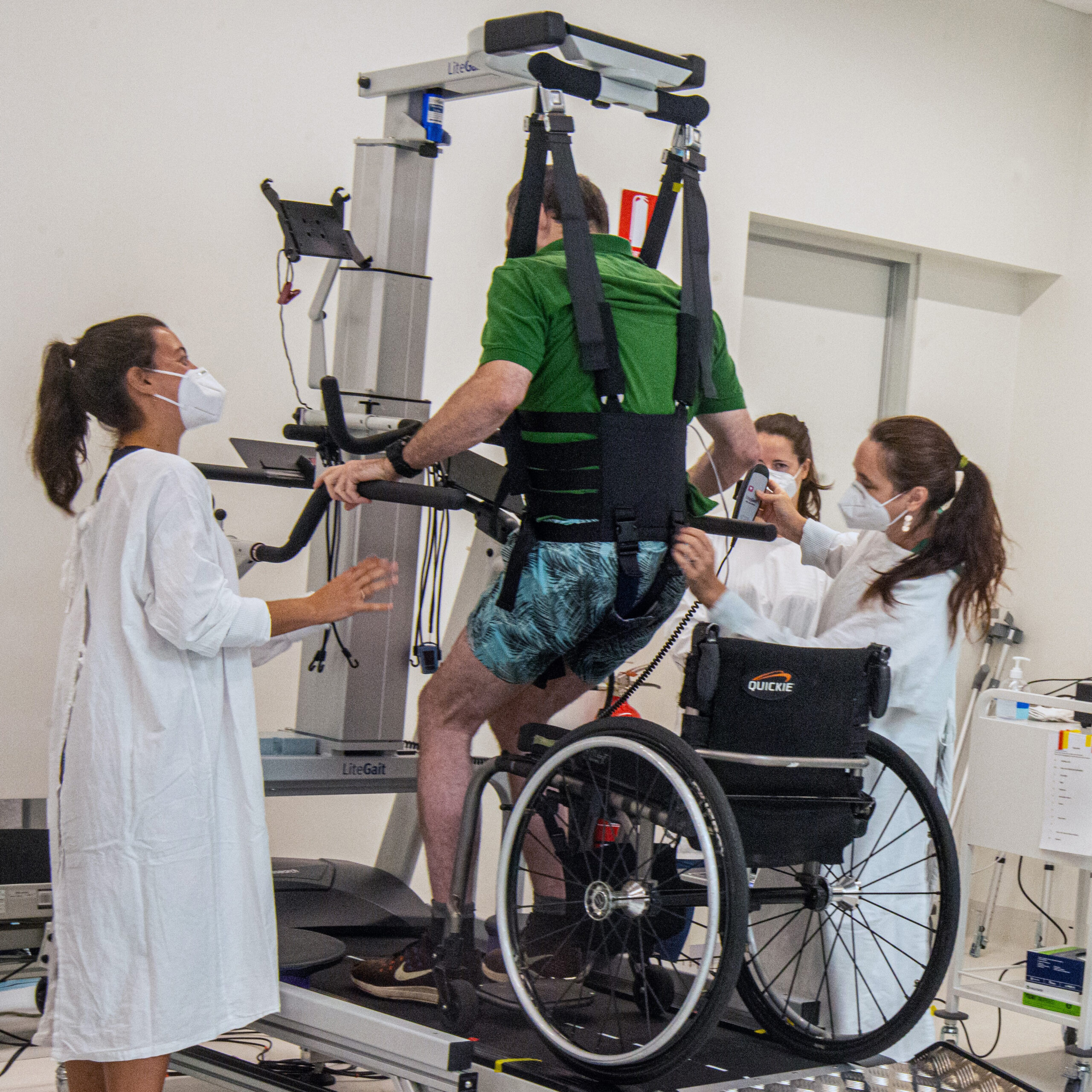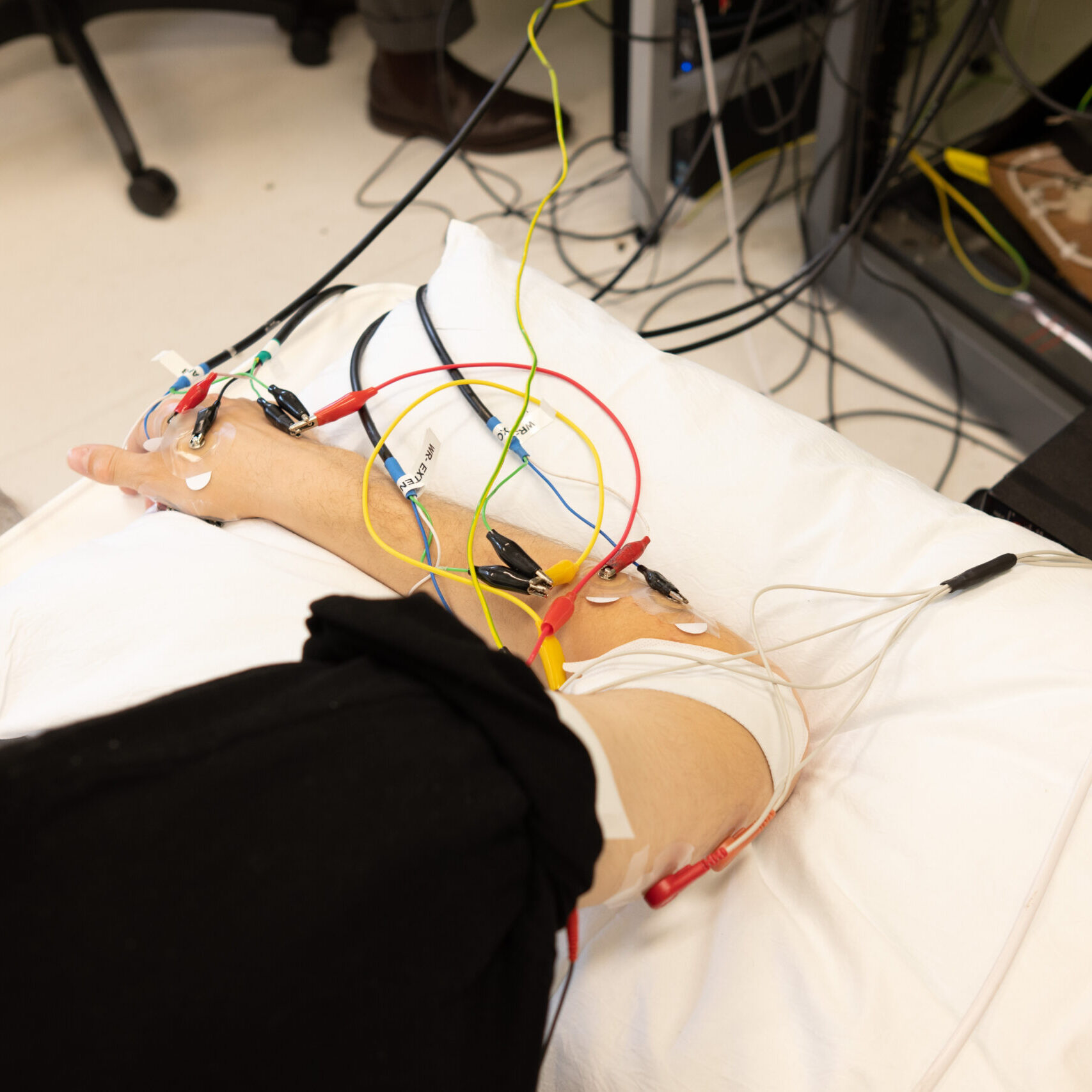Project Spark
Treating the injury
Clinical research
CatWalk, in collaboration with SpinalCure, has supported Project Spark since 2020.
Project Spark is a comprehensive research programme to advance rehabilitation and recovery. CatWalk supports both the eWALK trial and the Get a Grip study. These aim to advance rehabilitation techniques to improve mobility and aid sensory recovery.
This partnership underscores the transformative potential of collaboration.
CatWalk’s support of Project Spark relies on several key values:
- Innovative Approach:
Both the eWALK trial and Get a Grip study employ cutting-edge technologies and methodologies that promise significant breakthroughs. - Potential Impact:
The outcomes will lead to major improvements in mobility and dexterity for individuals with a spinal cord injury. This addresses some of the most challenging aspects of daily life post-injury. - Alignment with Mission:
Project Spark aligns with CatWalk’s mission to enhance the lives of individuals with spinal cord injuries. These studies will contribute to tangible advancements in spinal cord injury care and rehabilitation. - Collaborative Synergy:
This partnership with SpinalCure enhances the scope and reach of Project Spark. This helps to drive forward impactful research that might otherwise be limited by funding constraints.
The eWALK trial and Get a Grip study are two pivotal components of Project Spark. Each plays a crucial role in the larger research landscape, focusing on different aspects of the injury. Understanding these distinctions is critical for appreciating the comprehensive nature of Project Spark.
This trial is developing and refining electronic walking aids and neuromodulation technologies. These innovations will restore mobility by enhancing and/or bypassing damaged neural pathways.
eWALK is an electronic rehabilitation platform leveraging technology to assist patients in their recovery. It emphasises:
- Accessibility:
providing remote access to rehabilitation resources, so that patients to continue therapy at home. - Data-Driven Insights:
utilising data analytics to monitor progress and optimise rehabilitation strategies. - Technological Integration:
integrating technology (including virtual reality and wearable devices) to enhance engagement and accelerate outcomes.
The aim of the Get a Grip study is to explore if transcutaneous spinal cord neuro-stimulation (TSS), combined with exercise training, can improve hand and arm, and respiratory function for people with chronic tetraplegia.
This research targets the restoration of fine motor skills, Get a Grip will revolutionise the rehabilitation and recovery of individuals with spinal cord injury. Therapies that restore crucial functions, will significantly enhance patients’ ability to perform everyday tasks essential for daily activity and autonomy.
The primary objectives of the Get a Grip study include:
- Understanding the underlying mechanisms that contribute to hand and upper limb recovery, and respiratory function.
- Assess upper-limb dexterity, function and strength and respiratory muscle strength before and after – TSS and the exercise intervention.
- Development of standardised protocols for hand-function rehabilitation in SCI patients.
Using robotics, virtual reality, and electrical stimulation, Get a Grip is tailored to the participant. Addressing individuals needs ensures a personalised and effective rehabilitation plan.
The personalised approach of Project Spark addresses the diverse needs of different patients. It provides a comprehensive range of rehabilitation options. Project Spark aims to bridge the gap between research and practical, clinical application. Its data provides evidence to support approval for mainstream use.
Project Spark aligns with CatWalk’s desire to improve quality of life and increase independence.


